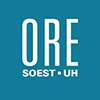To subscribe to the ORE seminar mailing list, click here.
For a (working draft) list of upcoming seminars, click here.
If you are interested in giving an ORE seminar, please contact us at nosal [at] hawaii [dot] edu.

- This event has passed.
MS Plan A Defense: Resident AUV design and validation for autonomous docking and charging at Kilo Nalu Observatory
April 28 @ 3:00 pm - 4:00 pm
Norman Chung
Masters Student
Department of Ocean & Resources Engineering
University of Hawai’i at Manoa
**This defense will be held in person (Holmes 287) and Zoom**
Meeting ID: 839 1898 9765
Passcode: NormanMS
Zoom link: https://hawaii.zoom.us/j/83918989765
Near-shore environments are important to oceanographers because of their relationship to the biogeochemical and anthropogenic processes which occur on land and at sea. Some traditional approaches to researching these environments include using fixed installations, such as cabled observatories and moored buoys, or mobile platforms like remotely operated vehicles (ROVs) and autonomous underwater vehicles (AUVs). Each of these approaches have their own advantages and disadvantages. Undersea infrastructure uses the proximity between near-shore environments and land to support oceanographic sensor arrays, but it is fixed and cannot adapt to investigate interesting, chance events. On the other hand, AUVs can react to these chance events, but usually require physical human presence and surface vessel support for launch and recovery, driving costs up. A novel way to combine these two, complementary approaches is resident, autonomous underwater vehicles (RAUVs). RAUVs are AUVs which permanently reside at underwater locations and perform multiple missions at a given site of interest without needing physical human intervention. They can react to events of interest and capture information at the finer spatial and temporal scales not captured as well by undersea infrastructure while using said infrastructure to recharge and exchange data for new missions. One obstacle associated with RAUV operation in this manner is the need to connect an RAUV to its underwater docking station during charging. Wired connections are prone to malfunctions in an underwater environment. However, new, wireless, inductive charging systems show promise for RAUV systems. These systems are less susceptible to damage via seawater corrosion and permit successful RAUV docking after a mission under less stringent positioning tolerances.
The goal of this research is to assess the feasibility of RAUV operation in the rough, near-shore environment at Kilo Nalu Observatory (KNO), a near-shore observatory off the south coast of Honolulu, Hawai`i. To that end, we present the design of a low-cost RAUV meant to autonomously dock, charge, and exchange data using KNO’s existing undersea infrastructure. The basis of our vehicle is the BlueROV2 Heavy, an affordable, underwater robot sold by Blue Robotics. Here, we show the mechanical and electrical upgrades made to turn the BlueROV2 Heavy into an RAUV. The mechanical upgrades include a new frame, increased payload capacity, larger thrusters, and a new camera dome. The electrical upgrades include larger battery capacity, an inductive charging module, a gimbaled camera system, a dual CPU configuration, and an expanded sensor suite. We also present the work done to develop an internal temperature monitoring system that ensures our RAUV’s batteries do not overheat during charging. We characterize the response speed of our thermistors and verify that our temperature monitoring system works with a simple experiment. Through this project, we will advance oceanographic research in KNO’s near-shore environment and accelerate the development of wireless, inductive charging and docking systems. In doing so, we will demonstrate the feasibility of RAUV underwater charging in future missions and installations.
